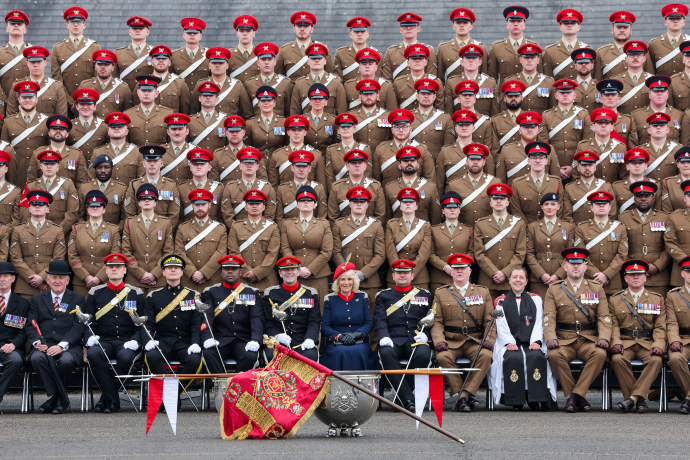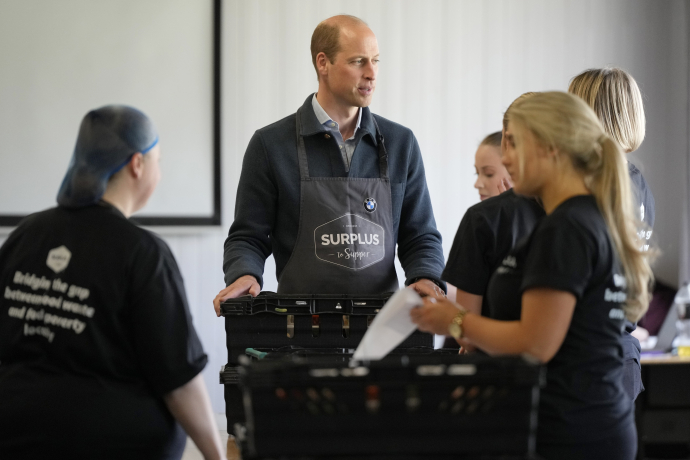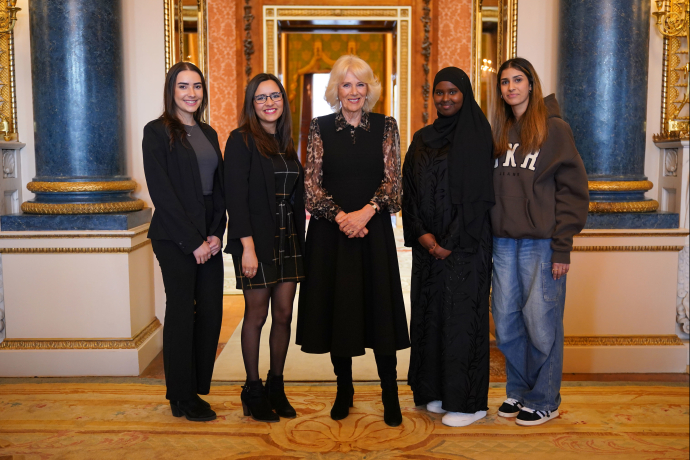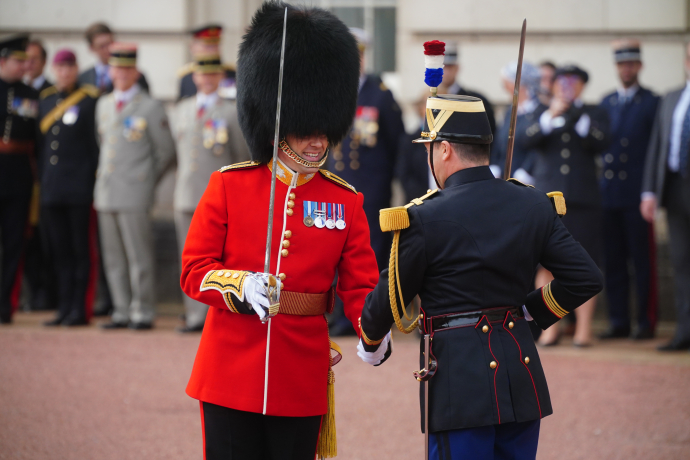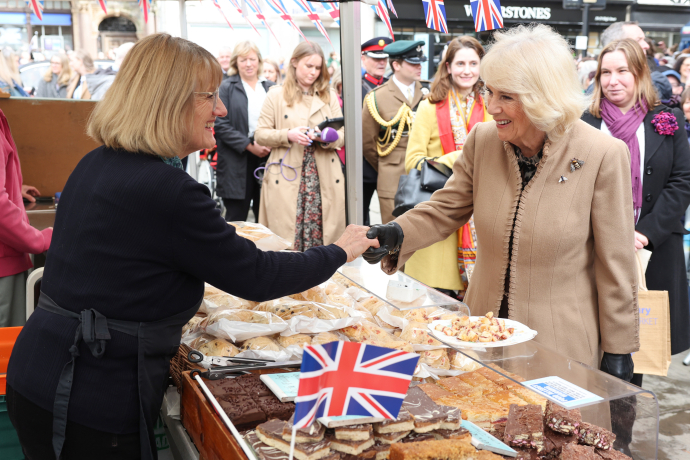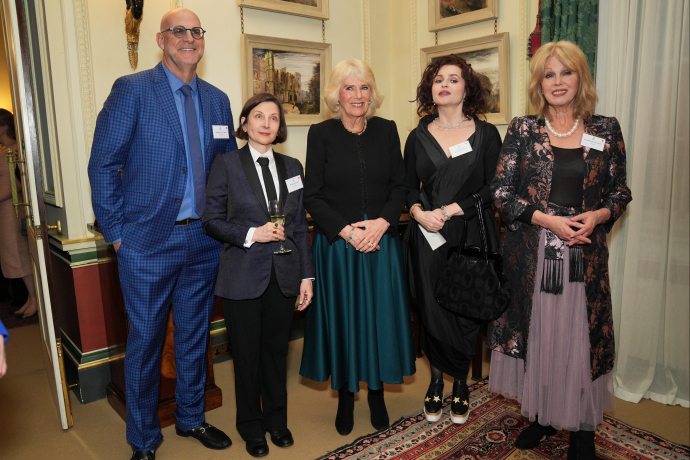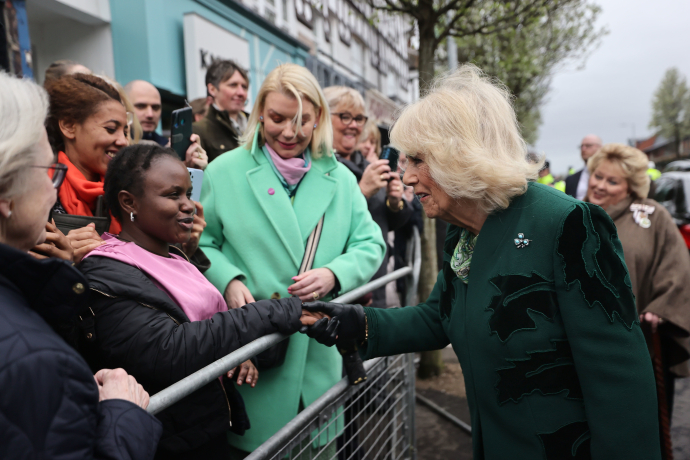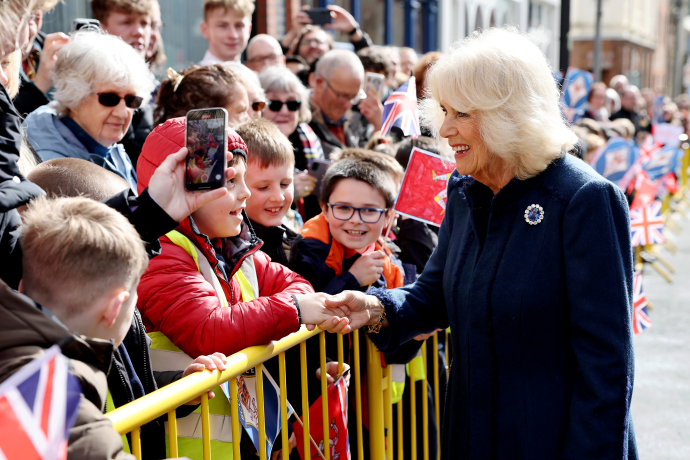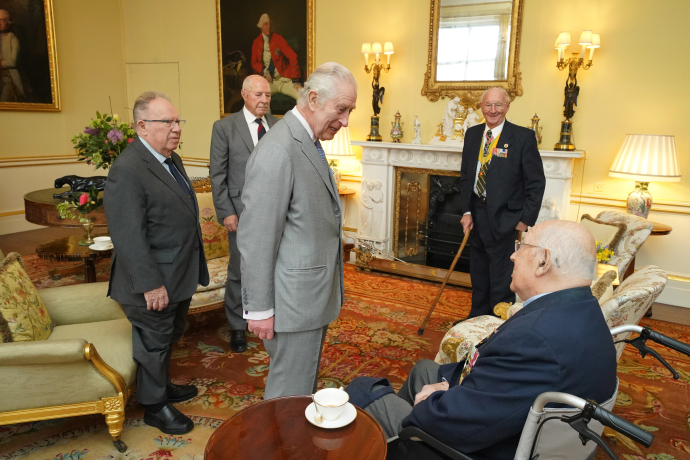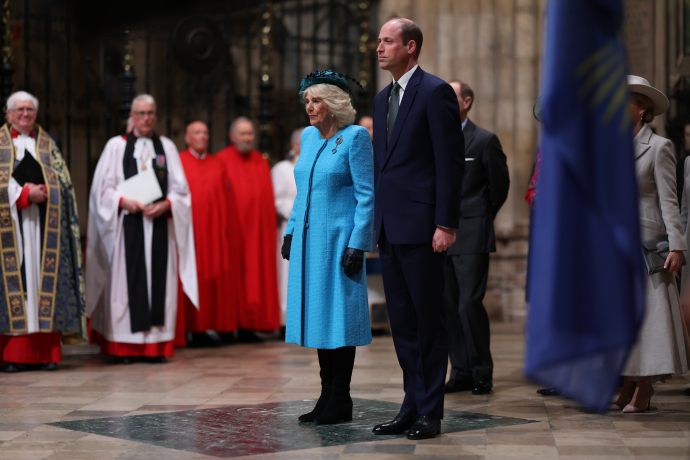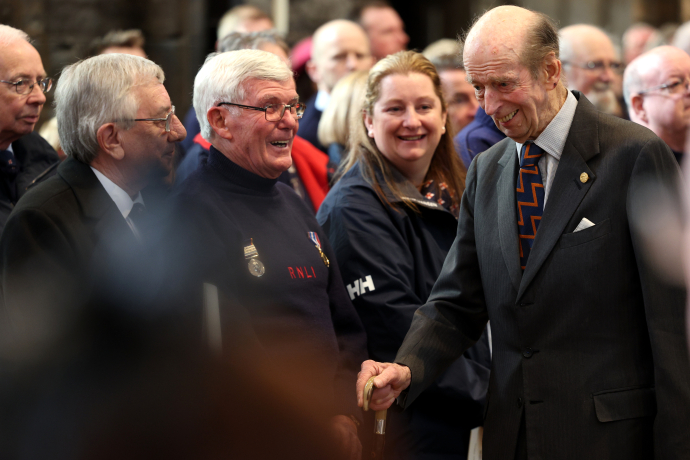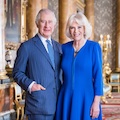The Union Flag, or Union Jack, is the national flag of the United Kingdom.
It is so called because it combines the crosses of the three countries united under one Sovereign - the kingdoms of England and Wales, of Scotland and of Ireland (although since 1921 only Northern Ireland has been part of the United Kingdom).
The flag consists of three heraldic crosses.
The cross of St George, patron saint of England since the 1270's, is a red cross on a white ground. After James I succeeded to the throne, it was combined with the cross of St Andrew in 1606.
The cross saltire of St Andrew, patron saint of Scotland, is a diagonal white cross on a blue ground.
The cross saltire of St Patrick, patron saint of Ireland, is a diagonal red cross on a white ground.
This was combined with the previous Union Flag of St George and St Andrew, after the Act of Union of Ireland with England (and Wales) and Scotland on 1 January 1801, to create the Union Flag that has been flown ever since.
The Welsh dragon does not appear on the Union Flag. This is because when the first Union Flag was created in 1606, the Principality of Wales by that time was already united with England and was no longer a separate principality.
The Union Flag was originally a Royal flag. When the present design was made official in 1801, it was ordered to be flown on all the King's forts and castles, but not elsewhere.
It is today flown above Buckingham Palace, Windsor Castle and Sandringham when The Queen is not in residence.
The Royal Arms of Scotland (Lion Rampant) is flown at the Palace of Holyroodhouse and Balmoral when The Queen is not in residence.
On news of a Royal death, the Union Flag (or the Royal Arms of Scotland (Lion Rampant) where appropriate) is flown at half-mast.
The Royal Standard is never flown at half-mast, as the Sovereign never dies (the new monarch immediately succeeds his or her predecessor).
The flying of the Union Flag on public buildings is decided by the Department for Culture, Media and Sport at The Queen's command.
The Union Flag is flown on Government buildings on days marking the birthdays of members of the Royal Family, Commonwealth Day, Coronation Day, The Queen's official birthday, Remembrance Day and on the days of the State Opening and prorogation of Parliament.
The term 'Union Jack' possibly dates from Queen Anne's time (r. 1702-14), but its origin is uncertain.
It may come from the 'jack-et' of the English or Scottish soldiers, or from the name of James I who originated the first union in 1603.
Another alternative is that the name may be derived from a proclamation by Charles II that the Union Flag should be flown only by ships of the Royal Navy as a jack, a small flag at the bowsprit; the term 'jack' once meant small.

